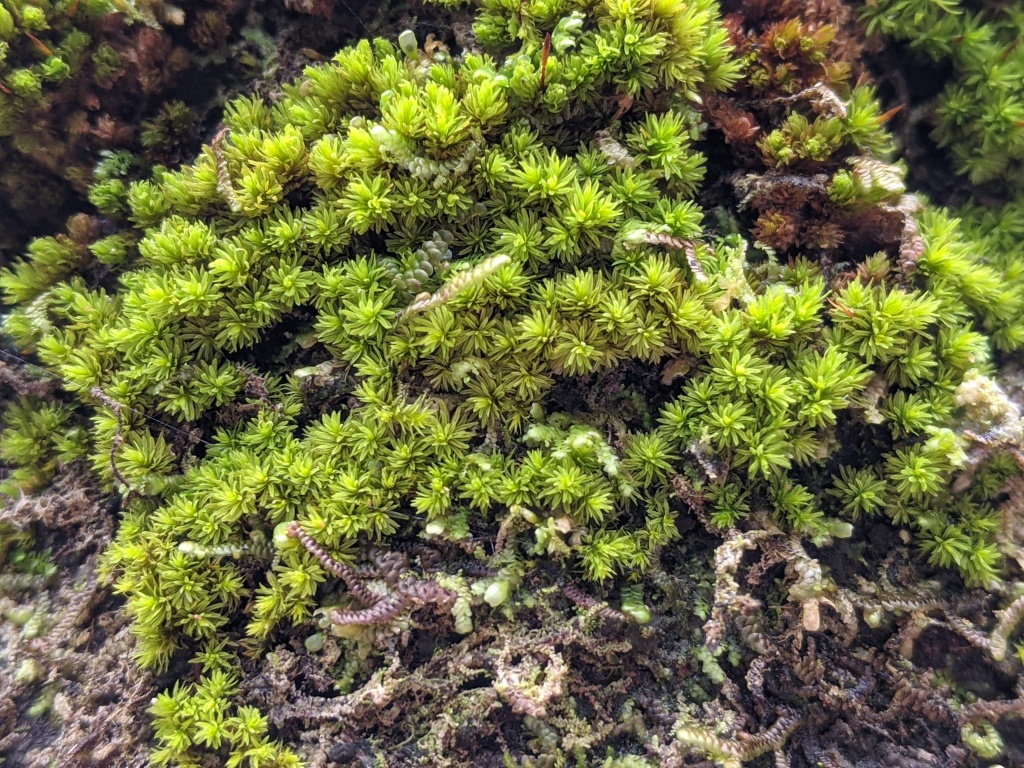Macromitrium archeri
Mitt.Pseudautoicous. Asexual propagules absent. Mats on trees, orange-green to dark golden-green, to 10 mm tall. Stems dark red-brown to black, tomentose with purplish red rhizoids on lower surface where in contact with substrate. Branch leaves irregularly twisted-curved to loosely curved around branch, not inrolled or funiculate when dry, straight and spreading when moist, ligulate to linear-lanceolate, 1.4–1.8 mm long, weakly carinate; apex acute to apiculate-acuminate; costa percurrent or excurrent; margin entire, plane or slightly reflexed, without a border; laminal cells in apical half elliptic or rounded-quadrate, 5–13 μm long, 5–12 μm wide, with large central conical papilla; basal laminal cells gradually becoming more elongate toward base, 12–40 μm long, 3–7 μm wide, smooth. Seta 2.8–8 mm long, light brown, twisted clockwise. Calyptra glabrous. Capsule erect, ovoid, 1.2–2 mm long, 4-angled to slightly 8-plicate just below mouth, straight, light brown, often breaking off at the neck. Peristome absent or fragmentary. Operculum rostrate, 0.75–1 mm long.
GipP, OtP, GGr, EGL, EGU, WPro, HSF, HNF, OtR, Strz, MonT, HFE. Recorded from the Grampians, the Otways, Yarra Ranges, Strzelecki Ranges, Wilsons Promontory and East Gippsland, usually in rainforest or wet sclerophyll forest, rarely among rocks in outcrops.
 Spinning
SpinningVitt, D.H.; Ramsay, H.P. (2006). Macromitrium. Flora of Australia 51: 191–218.


